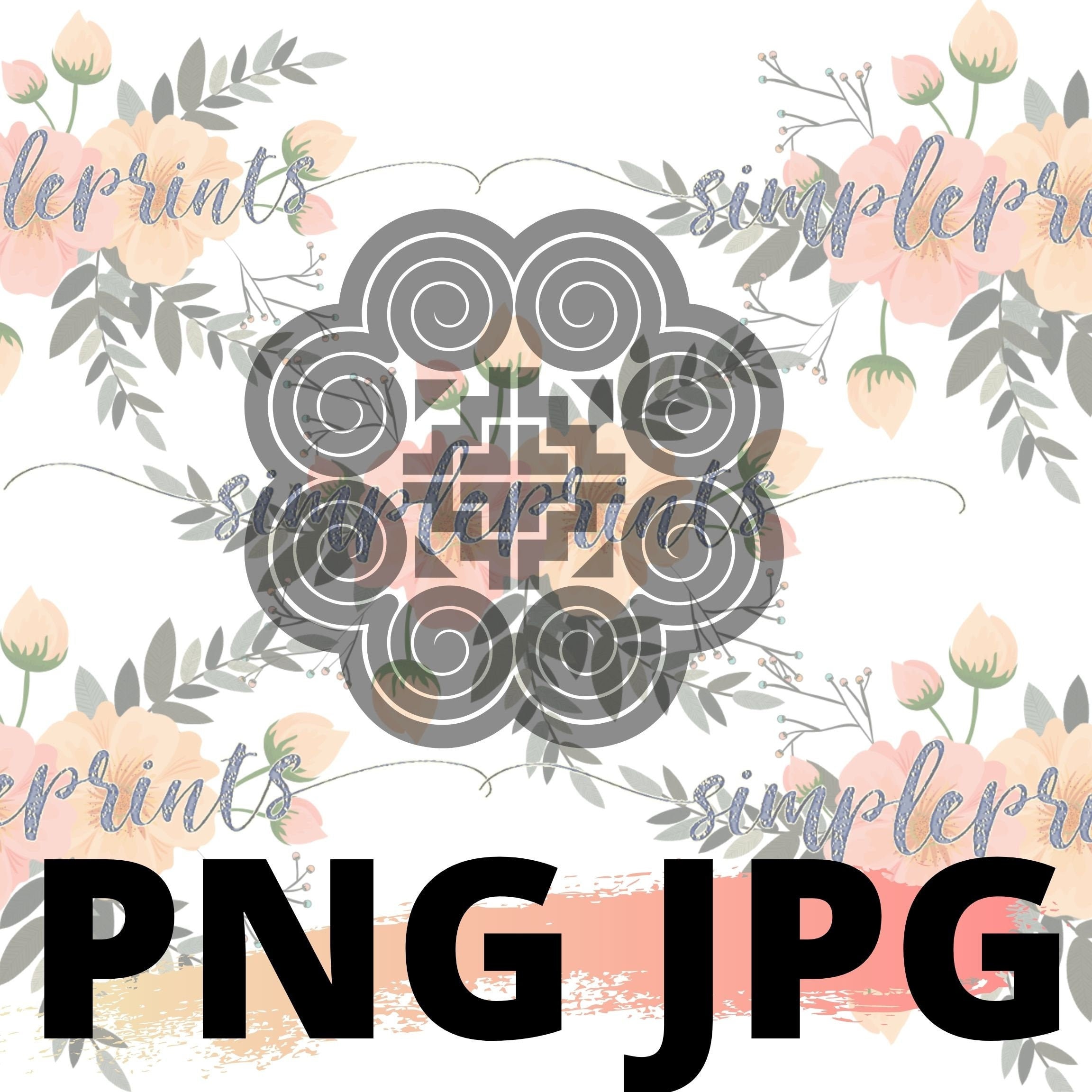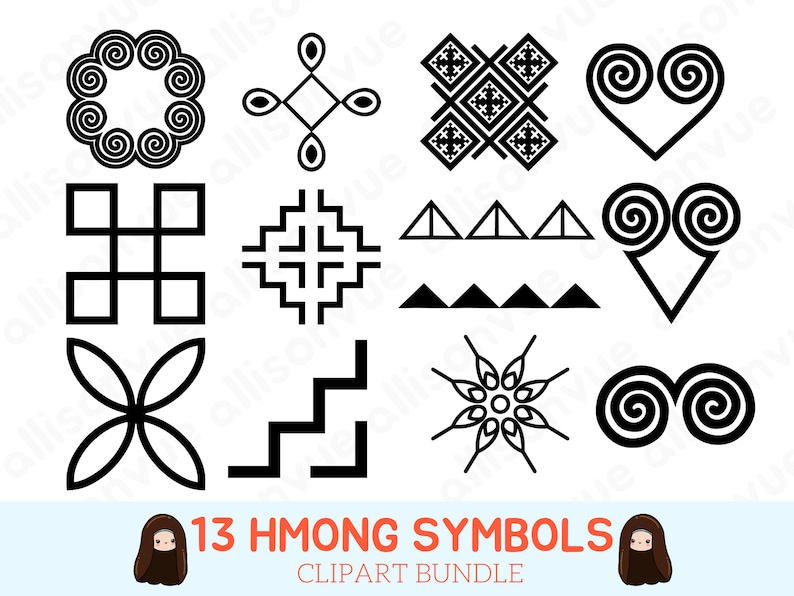
Hmong Symbology Textile Motifs & Meanings Haute Culture Hmong
ABOUT THIS COLLECTION Hmong in the diaspora are reconnecting with their roots through contemporary means such as tattoo. Through this collection, visitors can examine portraits of individuals who have chosen to permanently represent their heritage through tattoo.

hmong logo 10 free Cliparts Download images on Clipground 2023
For instance, the snail is a symbol of family growth and interrelatedness. The centre of the coil of the snail's shell symbolizes dead ancestors. The outer spirals are the successive generations, and the double snail shell represents the union of two families and also symbolizes the spinning motion used in many spiritual chants

Pin on good to know
Traditional Hmong embroidery used symbols to tell a story. Many of the meanings have been lost to time, but historians are trying to save what they can., Star Tribune Hmong embroidery, Star Tribune into their skirts to create messages, disguising them as patterns, Lor explained.

Hmong Breast and Cervical Cancer Project on Behance
The Hmong hat is a timeless symbol of pride and identity in Hmong culture. Its intricate embroidery, colorful beads, and appliques represent the daily life of the Hmong people and their rich cultural heritage. Whether worn for ceremonial purposes, special events, or everyday wear, the Hmong hat remains an enduring emblem of Hmong identity.

Pin by Dizzyr on weaving symbols & motifs Hmong embroidery, Hmong
The Hmong traditional textiles, used in production of various garments and accessories, are characterized by some specific decorative elements, often combined with each other. In addition to cross-stitch embroidery of mostly geometric patterns, a significant role is played by the dyeing of cotton and hemp through the batik technique and through.

I loves a chart! Especially one that depicts symbology used in textiles
these identity symbols are culturally and socially meaningful to Hmong adolescents. We examine what meaning is ascribed to language and style by Hmong adolescents and how language and style act as symbols to distin-guish identity. Specifically, how do the cultural meanings attributed to

Hmong Weaponry Hmong Sticker TeePublic
The Hmong people are a transnational ethnic group who have cultural roots in East Asia (China) between 2700 BCE and 2300 BCE, Southeast Asia (Burma, Laos, Myanmar, Thailand, Vietnam) since the late 1800s, and around the world (Argentina, Australia, Canada, France, French Guiana, United States, and other countries) since the 1970s.

"hmong symbol with last name" Sticker for Sale by Xiongtees87 Redbubble
Hmong Motifs & Symbols. The design motifs listed here are typically found on many types of Hmong embroidery and story cloths (paj ntaub). Elephant's Foot . Ko taw ntxhw. Snail . Qab qwj . Snail/Chev . Lub qwj yees. Mountain . Rooj. House . Lub tsev . Quarter Rickrack/Steps. Tus ntaiv. Rickrack/Step. Theem ntaiv. X or a Cross . Tus cim caiv. Fence .

SUPER NATKI HMONG SYMBOLS
Elephant: The elephant is a symbol of wisdom, strength, and longevity in Hmong culture. It represents the importance of knowledge and the ability to overcome obstacles. The elephant is often depicted in Hmong art and is a common motif in traditional Hmong embroidery.

Hmong Design Hmong Digital Hmong Print Hmong Symbol Hmong Etsy
Hmong embroidery includes bright colors: pinks, reds, greens, as well as blues, and these are sometimes used to contrast with the colors of yellow and brown overlaid with white (Hassel, 1984). From a young age, Hmong girls learn how to sew and copy motifs from their mothers and grandmothers.

hmong svg symbol in 2021 Hmong tattoo, Symbols, Hmong
Hmong Textile Art consists of traditional and modern textile arts and crafts produced by the Hmong people.Traditional Hmong textile examples include hand-spun hemp cloth production, basket weaving, batik dyeing, and a unique form of embroidery known as flower cloth or Paj Ntaub in the Hmong language RPA.The most widely recognized modern style of Hmong textile art is a form of embroidery.

Hmong Tribal Symbols and Motifs svg png hmong hmoob svg png Etsy
Embroidery: Others. EO1: The methods used in this piece are typically associated with traditional Hmong women's sashes. They would usually involve a row of three or four and are often sewn to a red or green sash. The motif utilized is a modified snail, meaning half of the snail is reversed so it does not look like the traditional snail design.

Mien textile Hmong embroidery, Hmong clothes, Hmong textiles
The rich tradition of storytelling through embroidered cloth allows Hmong elders to communicate history, tradition and folklore to both a wider international audience and with younger generations of Hmong raised in the United States. All Hmong textile art uses symbols to tell stories, many taking a month or more to complete.

Hmong Design Hmong Digital Hmong Print Hmong Symbols Etsy
Many images have both a representational and a symbolic meaning. Triangles often represent mountains, like the ones the Hmong crossed, and inverted L-shapes often represent steps. While some of the traditional meaning of paj ntaub imagery has been lost, the art remains alive as present-day makers strive to create original patterns or put modern.

hmong motifs beautiful tattoo idea in 2021 Hmong tattoo, Beautiful
Find out the meaning behind all the Passa Paa motifs and choose your favourite!. The goal was to have symbols and shapes that are important for the Hmong culture but at the same time are symmetrical and adaptable. Because Pok grew up seeing these symbols (for example embroidering them in her Hmong skirts), her knowledge is key to our design.

Hmong patterns that I would love to form into a tattoo pattern down the
Hmong women created paj ntaub, or flower cloths, that use geometric designs to pass stories to their children. Each design has a meaning related to Hmong history and culture. The geometric designs are created by cutting and layering fabrics that are then sewn in a reverse applique technique. Flower cloths are often embellished with embroidery.